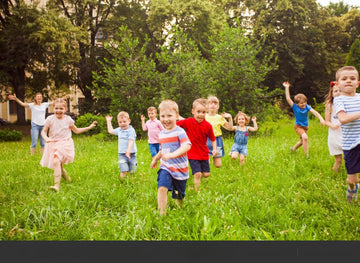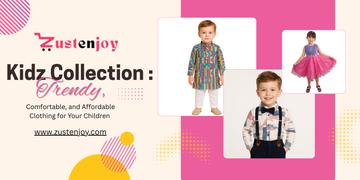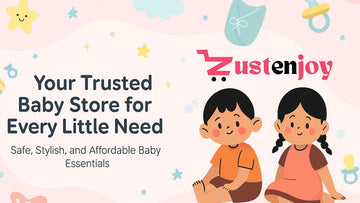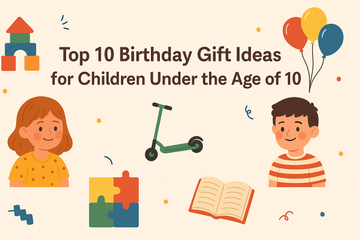Understanding Growth in Early Childhood
The early years of a child’s life, especially between 1 to 5 years, are crucial for physical, cognitive, emotional, and social development. This period lays the foundation for a child's future health and well-being. Parents and caregivers must be aware of the key growth patterns to ensure their child is developing optimally. Toys such as shape sorter toys, alphabet puzzles, and wooden toys play a vital role in stimulating growth and development during this stage.
Physical Growth Milestones
1-2 Years: The Toddler Stage
Height & Weight: Children grow about 4-5 inches (10-12 cm) in height and gain around 2.5-3.5 kg in weight during this period.
Motor Skills: By 18 months, most toddlers can walk independently, climb stairs with assistance, and use their hands to grasp small objects.
Teething: By 24 months, toddlers usually have 16-20 teeth, allowing them to transition to solid foods.
Toys That Help: Push-and-pull toys, wooden toys, stacking rings, and shape sorter toys help enhance motor skills.
2-3 Years: Building Strength and Coordination
Height & Weight: Growth continues at a steady rate, with children gaining around 4 inches (10 cm) per year.
Gross Motor Skills: Kids can run, jump, and kick a ball. Their balance improves, and they can begin riding a tricycle.
Fine Motor Skills: Improved dexterity allows them to hold a crayon, turn book pages, and begin scribbling.
Toys That Help: Alphabet puzzles, stacking blocks, and shape sorter toys enhance fine motor coordination.
3-5 Years: Preparing for School Years
Height & Weight: By age 5, most children weigh between 15-20 kg and stand 90-110 cm tall.
Muscle Development: Kids become more agile, with better coordination. They can hop on one foot, dress themselves, and handle small objects with greater precision.
Dental Development: By age 5, they typically have a full set of 20 primary teeth.
Toys That Help: Puzzles, alphabet puzzles, and wooden toys aid in enhancing problem-solving and cognitive skills.
Cognitive Development in Early Childhood
1-2 Years: Learning Through Exploration
Children start recognizing objects, pointing to familiar items, and following simple instructions.
By 18 months, they can use simple words and gestures to communicate needs.
They develop problem-solving skills, such as opening containers or stacking blocks.
Toys That Help: Shape sorter toys and wooden stacking toys help improve problem-solving abilities.
2-3 Years: Expanding Knowledge
Language skills improve dramatically. A 2-year-old can form short sentences, while a 3-year-old speaks in 3-5 word phrases.
Basic counting and color recognition begin.
Memory skills develop, allowing kids to recall familiar routines and people.
Toys That Help: Alphabet puzzles, wooden educational toys, and interactive books support language and memory skills.
3-5 Years: Logical Thinking and Creativity
Children start understanding time concepts (yesterday, today, tomorrow).
Imaginative play increases, helping with creativity and problem-solving.
They can count up to 10, recognize some letters, and follow multi-step instructions.
Toys That Help: Puzzles, alphabet puzzles, and educational wooden toys promote logical thinking and creativity.
Emotional and Social Growth
1-2 Years: Expressing Basic Emotions
Toddlers begin to show attachment to caregivers and may experience separation anxiety.
They express frustration and excitement but have limited emotional control.
Parallel play (playing alongside but not with other children) is common.
Toys That Help: Stuffed animals and role-play wooden toys foster emotional security and social interaction.
2-3 Years: Learning Social Interaction
Children start to develop empathy and recognize others’ feelings.
They enjoy imitating adults and older kids, learning through observation.
Simple turn-taking games become possible.
Toys That Help: Pretend play sets, board games, and interactive puzzles teach sharing and cooperation.
3-5 Years: Independence and Friendships
Kids become more social, forming early friendships.
They begin to understand sharing and cooperation but may still struggle with emotional regulation.
Role-playing and imaginative play help them express emotions and develop problem-solving skills.
Toys That Help: Wooden playsets, educational puzzles, and storytelling toys enhance emotional intelligence and social skills.
Conclusion
The growth and development of a child between 1 to 5 years is a remarkable journey filled with milestones. Ensuring a nutritious diet, ample playtime, emotional support, and a stimulating learning environment will help them reach their full potential. Toys such as shape sorter toys, alphabet puzzles, wooden toys, and puzzles play a significant role in a child's early learning journey. Parents and caregivers can provide the best support by integrating these engaging and educational toys into daily playtime.
Explore a variety of educational toys for kids at ZustEnjoy.com to help your child grow and learn in a fun and engaging way!






